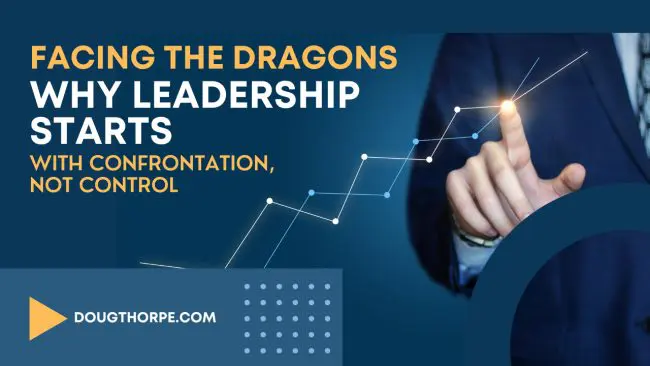
We, the captains of our professional and community ships, spend our days steering, navigating, and occasionally throwing out life preservers. We’re problem solvers, decision-makers, and cheerleaders, fueled by the noble ambition to make things better. But in the pursuit of progress, one crucial truth can get swallowed by the waves: you can’t fix what you won’t face.
It’s tempting, isn’t it? To tiptoe around the storm clouds, hoping they’ll dissipate on their own. To smooth over cracks in the hull with a fresh coat of paint, ignoring the ominous groans from below. We fear the chaos, the backlash, the messy detangling of the knots we’ve inherited or inadvertently tied ourselves. But this avoidance game, this dance with denial, is ultimately a leadership failure. It betrays the trust of those who rely on us to chart a safe and honest course.
Here’s the thing: problems, challenges, and yes, even dragons, rarely melt away under the sunbeams of avoidance. They grow, they fester, they evolve into three-headed hydra monsters that make steering impossible. By refusing to face them head-on, we surrender the power to shape the outcome. We become reactive bystanders, not proactive navigators.
How do we shed the Captain Ahab cloak and become genuine dragon slayers? It starts with a simple, gut-wrenching act: acknowledgment. Recognize the storm, don’t pretend it’s a passing drizzle. Name the cracks, don’t cover them with posters of happy crewmates. This isn’t about negativity; it’s about creating a shared reality, a foundation on which solutions can be built.
Confrontation isn’t an attack, it’s an invitation. It’s opening the door to a difficult conversation, stepping into the discomfort zone where Growth resides. It’s about listening without judgment, understanding not only the problem but also the underlying fears and anxieties it stirs. This is where trust truly gets forged, in the crucible of shared vulnerability.
Once we’ve faced the dragon, its horns lose their shine. We can begin to dissect its anatomy, understand its motivations, and identify its weak spots. This is where the real leadership magic happens. It’s not about controlling the dragon, but about inspiring others to join the fight. It’s about empowering your team, your community, to take ownership, to raise their swords and shields together.
There will be dissent, disagreement, and moments of sheer terror. But remember, the alternative is far worse: a ship adrift, crew demoralized, waiting for the inevitable iceberg. By leading with courage, honesty, and a willingness to embrace the storm, we create the conditions for true transformation.
This doesn’t mean rushing into every battle with reckless abandon. Strategic retreat and careful planning are vital parts of the dragon-slaying arsenal. But ultimately, the key to leading effectively lies in recognizing that our leadership doesn’t reside in our ability to fix things, but in our courage to face them – even when the fire breathes hot and the wings blot out the sun.
So, let’s set sail, not with maps of predetermined outcomes, but with compasses that point towards honest confrontation. Let’s be leaders who face the dragons, not bystanders waiting for the rescue boats. And who knows, maybe along the way, we’ll discover that the fire we feared not only illuminates the path, but also forges our own wings.
Now, go forth and slay some dragons (figuratively, of course). Your crew and your community are counting on you.
The post Facing the Dragons: Why Leadership Starts with Confrontation, Not Control appeared first on Business Advisor and Executive Coach | Doug Thorpe.
Notifications